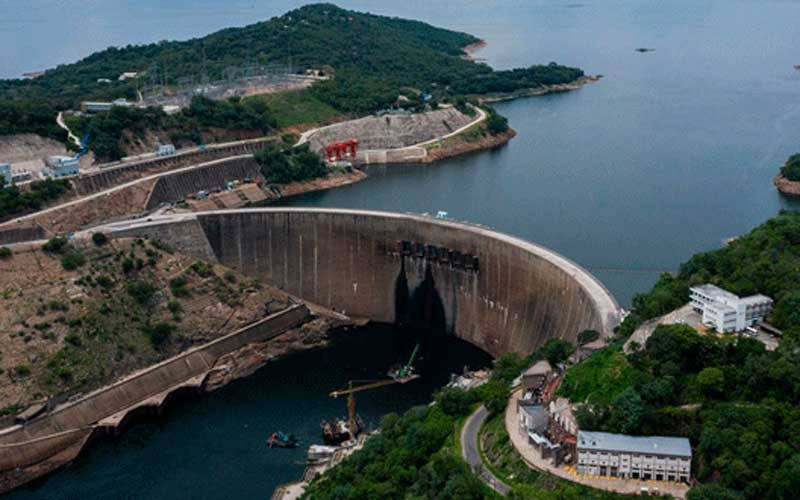
CLIMATE change experts and economists have called for international cooperation in finding alternative energy generation mechanisms to support the Batoka Gorge Hydroelectric Power Station (BGHPS) project.
The BGHPS will involve the building of a 181-metre-high, 720-metre-long roller-compacted concrete gravity arch dam with two surface power stations situated on both sides of the Zambezi River, one in Zambia and another in Zimbabwe.
Each of these two power stations draw from the dam to generate electricity with a total installed capacity of 1 200 megawatts (MW) each, giving a total installed capacity of 2 400 MW. Completion of the project is expected by 2034 with an estimated cost of US$2,6 billion.
However, as southern Africa has been experiencing diminishing water levels and rising temperatures over the years, the viability of the BGHPS project is under threat.
Multiple studies have shown that the hydropower output in the Zambezi is highly exposed under a wide range of climate scenarios.
“Even with the construction of the Batoka and Devils Gorge hydroelectricity plants there is a significant decline in output by 2050 pointing to the climate risk of these investments,” the World Bank’s Zimbabwe Climate and Development report reads in part.
The bank said increasing the share of renewable energy from its low base in 2022 (less than 1%) to 45% by 2040 would reduce reliance on large hydro power stations (55% in 2022) and increase climate resilience.
The World Bank’s advice came at a time when the government’s biggest planned increase in electricity supply comes from the BGHPS.
- COP26 a washout? Don’t lose hope – here’s why
- Out & about: Bright sheds light on Vic Falls Carnival
- COP26 a washout? Don’t lose hope – here’s why
- Out & about: Bright sheds light on Vic Falls Carnival
Keep Reading
Climate and environment analyst Kundai Ngwena said there was a need for Africa to incorporate robust adaptation and mitigation measures to address climate change.
“Africa is the one that is affected the most by climate change yet when it comes to the causes, it is the one that is the least contributor on the list,” Ngwena said.
“Henceforth, we need to be at the forefront of trying to push towards climate change mitigation as well as adaptation.”
She stressed the need to advance power generation alternatives to complement the Batoka project, which was a major milestone for power generation in southern Africa.
“If you look at the Batoka project, it is approximately looking at supplying 2 400 megawatts of power,” Ngwena added.
“Zambia has been supplying many countries in terms of power, but as a result of the reduced dam levels, it has been difficult to do so.
“Henceforth, this project will come into play and will lead to an increase in the existing energy metrics.
“Once this project is there, we can rest assured that there will be an enhancement of the existing energy metrics in both countries.”
Ultimately, the effect of climate change will see a drop in water levels, but there is a way to bring in climate change mitigation and adaptation mechanisms, she noted.
“If you look at the African Single Electricity Market, where we need to be able to export our power, we can start by improving the power supply,” Ngwena said.
“If you look at countries in the northern power pool, you will notice that Morocco has one of the world’s largest solar farms, churning out around 580 megawatts, and as such, they are playing their part in their regional power pool.
“This is a milestone project and will speak to us playing a part in our Southern African Power Pool.”
Economist Vince Musewe said the Batoka project was a game changer for the energy sector.
“Batoka hydropower station, when complete, will be a game changer,” Musewe said.
“It is a real pity it has taken so long, and I bet it is more about vested interests than its potential economic impact. We are not good at all with huge infrastructure projects.”
He said by incorporating adaptive management strategies, exploring alternative energy sources, and fostering international cooperation, it was possible to mitigate the risks and ensure the project’s long-term sustainability.
“These may include the implementation of advanced water management strategies, such as efficient reservoir operations, to optimiSe water usage during periods of scarcity,” Musewe said.
“Additionally, exploring alternative renewable energy sources, such as solar and wind power, could provide a diversified energy mix, reducing the project’s reliance on hydroelectricity alone.
“Addressing the challenges facing the Batoka Hydro Power Project requires a collaborative effort between stakeholders at various levels.
“International cooperation can facilitate knowledge sharing and financial support for climate resilience initiatives.”
He added that engaging affected communities, environmental organisations, and local experts would be crucial in developing sustainable solutions that balance the region’s energy needs with environmental conservation.
Economic analyst Victor Bhoroma said there was a need to implement cost-reflective tariffs in both Zimbabwe and Zambia to make the project viable in the meantime.
“The Zambezi River basin has immense potential in terms of power generation as there are a lot of sections where water can be dammed upstream and released after generating power,” Bhoroma said.
“The project is viable as a public private partnership if you consider the massive power deficit in the two countries that share Kariba and even beyond in the Sub-Saharan Africa region.
“To ensure sustainability, it needs a cost-reflective tariff in both countries.”
Zambia and Zimbabwe are set to re-tender the Batoka Gorge hydropower project.







